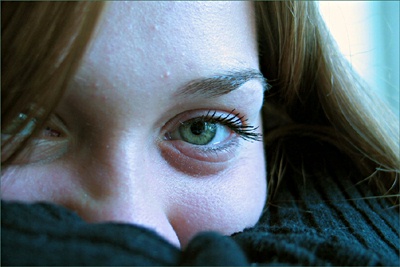All Nonfiction
- Bullying
- Books
- Academic
- Author Interviews
- Celebrity interviews
- College Articles
- College Essays
- Educator of the Year
- Heroes
- Interviews
- Memoir
- Personal Experience
- Sports
- Travel & Culture
All Opinions
- Bullying
- Current Events / Politics
- Discrimination
- Drugs / Alcohol / Smoking
- Entertainment / Celebrities
- Environment
- Love / Relationships
- Movies / Music / TV
- Pop Culture / Trends
- School / College
- Social Issues / Civics
- Spirituality / Religion
- Sports / Hobbies
All Hot Topics
- Bullying
- Community Service
- Environment
- Health
- Letters to the Editor
- Pride & Prejudice
- What Matters
- Back
Summer Guide
- Program Links
- Program Reviews
- Back
College Guide
- College Links
- College Reviews
- College Essays
- College Articles
- Back
Eye See
Color is a significant – sometimes vital – part of our daily lives. We learn the names of colors as we grow up, use them to identify the many objects surrounding us, and even associate them with various emotions. It is therefore interesting to discover that there are people who see more – or fewer – colors than the average person.
Color blindness, also known as color vision deficiency (CVD), is one such example. It is often an inherited trait, and can last a person’s lifetime. Complete color blindness, which is known as achromatopsia, permits a person to only see various shades of grey. It also often entails a sharper sensitivity to light.
There are several other kinds of color blindness which are more common than achromatopsia, three of them falling under the category of anomalous trichromacy – deuteranomaly, protanomaly, and tritanomaly. People with such forms of vision are less sensitive to certain colors despite having three color receptors in their eyes. A person with deuteranomaly, which is the most common form of CVD, is less sensitive to green light; one with protanomaly is less sensitive to red light; and one with tritanomaly, the rarest form of CVD – to blue light. These conditions vary from person to person, and can consist of extreme differences in contrast to normal vision, or very minimal ones.
Another kind of CVD, known as dichromacy, is the lack of one cone (color receptor) in a person’s eyes. Three kinds of CVD fall under this category – protanopia, tritanopia, and deuteranopia. A dichromat cannot perceive a certain section of the light spectrum – red, blue, or green, respectively. Interestingly, people with protanopia and deuteranopia (as well as protanomaly and deuteranomaly) are often grouped under the umbrella of “red-green colorblind” due to the fact that they see in similar ways, despite there being certain differences between their perceptions of the world.
Tetrachromacy, on the other hand, is the presence of four cones, or color receptors, in one’s eyes, unlike most humans who only have three. Those who have this condition are capable of seeing up to 100 million colors. Though not all people who have a fourth receptor necessarily see more colors, those who do are capable of differentiating between colors which the average person cannot. In this way, they may notice extremely subtle hues which no one else would recognize simply because they are incapable of doing so.
Considering that our vision is linked to so many other factors in our lives, it is incredible to discover the many different ways we perceive the same objects. This seemingly universal facet of all people is in fact unique from person to person, and is another intriguing and fascinating part of ourselves we have yet to learn more about.

Similar Articles
JOIN THE DISCUSSION
This article has 0 comments.
